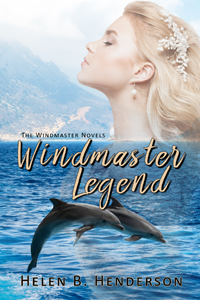To purchase my novels and other BWL books: BWL
Tarred and feathered, tortured, hangings? That was often the fate of the Loyalists in America.
As an American, I should be fully behind the Patriots in the fight for freedom during the American Revolution. But writing about the establishment of New Brunswick in the Canadian Historical Brides series, I read numerous research on the Loyalists who fled the U.S. after being persecuted for backing King George III. Many settled in New Brunswick, forming a new colony.
That's stirred my interest in the Loyalists and their plight while still in the States.
I thought people would be offended by my telling this side of the story. To my surprise, they weren't. Even my Book Club loved the book. Especially the enigmatic Welshman, who takes Rowena on as a spy. Sexy guy!
Loyalists believed the country could never survive on its own, without the Mother Country. They thought the Patriots a ragtag group of trouble makers. In turn, the Patriots, anxious to be free of the tether of British laws, and taxes, considered the Loyalists traitors. Spies infiltrated both sides to see who was loyal to who. Plus, to gain troop movements to pass on to various commanders.
Also called Tories, the Loyalists consisted of one third of the thirteen original colonies. Their numbers were spread out in the colonies and came from differing classes, farmer to merchant. The Patriots ordered them to join the war to fight the British, or their properties would be subject to confiscation or burning. If Loyalists were captured in battle they were treated as traitors and often killed.

1774 British print of a Boston commissioner
being tarred and feathered.
My heroine's father is tarred and feathered in the novel's first scene. A true, particularly violent act occurred in 1775, in Georgia. Loyalist Thomas Brown was confronted on his property by the Sons of Liberty. Brown was beaten with a rifle, which fractured his skull. Strapped to a tree, stripped naked, hot pitch was poured over him, then he was set alight. Two of his toes were charred to stubs. Then the Patriots rolled him in feathers and scalped him.
Many fled north to Canada, especially after the war. Others were tortured or hanged. Out of desperation, some joined the Patriot side so they could remain in their homes.
Loyalists refugees traveling to Canada by Howard Pyle
My heroine, Rowena, is a staunch Loyalist, along with her family. But as the war wears on, she wonders if she is on the right side. Do the Patriots have good reason to want independence?
"Rowena is a star. Bless Derec Pritchard who loves Rowena for who she is. Their chemistry is fabulous. Readers will love to read this alternative view of American history." InD'tale Magazine
Find out more about me and my writing on my website: Dianescottlewis
Diane Parkinson (Diane Scott Lewis) is a member of the Historical Novel Society and the Napoleonic Historical Society. She’s had several historical novels published. Her most recent is the Revolutionary War novel, Her Vanquished Land.
Her upcoming novel Ghost Point, the 1950s Potomac oyster wars, love and betrayal, will be released in September.
Diane lives with her husband and one naughty dachshund in Western Pennsylvania.





























































